You are using an out of date browser. It may not display this or other websites correctly.
You should upgrade or use an alternative browser.
You should upgrade or use an alternative browser.
Filipinas: La Gloriosa y Más Allá
- Thread starter ramones1986
- Start date
Timeline of Events, 1873-74: Blanco Valderrama, the Caretaker (continuation)

The plan of the Palacio del Gobernador
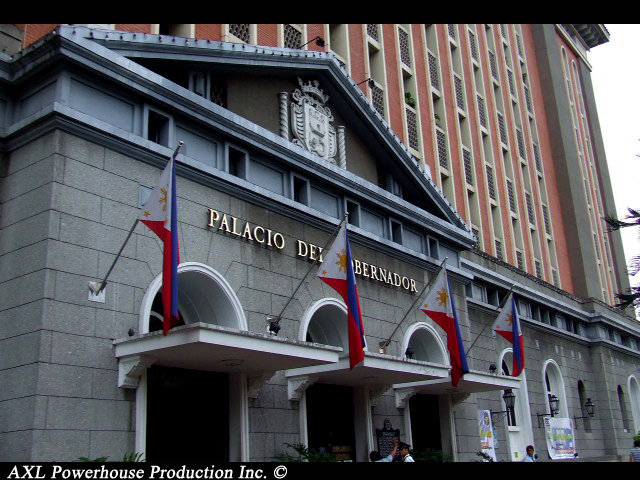
15 March:
July:
September:
October:
Note: [*]: ITTL, this is the sign of the Philippine Peso.
1873

The plan of the Palacio del Gobernador
The modern Palacio del Gobernador, the seat of government
15 March:
The Governor-General issued a decree that gave the Junta General limited legislation power, of which the most important was the budget. Also, Manuel Blanco Valderrama announced the transformation of the Committee into a Cabinet, to be presided by Joaquin Pardo de Tavera, the President of the Junta General.
7-11 April:
The Junta General approved a law that calls for amnesty to the bandits, especially in the provinces of Pampanga and Cavite, ending the imposed martial law declared by former Governor-General Rafael de Izquierdo.
May:
The Governor-General approved the law that passed by the Junta General that established the procedures of the General Budget. According to the said law, the budget must be approved by the two-thirds of the Junta after third readings; amendments were included if necessary.
July:
The Junta General approved the resolution that called for an expedition to the frontiers of the current borders of the Islands. The expeditions costs PH$(*)2,000,000.00. The Governor-General studied the said resolution for two days, and after some consultations with the President Pardo de Tavera and the Cabinet, the resolution was approved.
September:
The Junta General approved the establishment of a National Forest Commission, whose mission was to regulate the logging activities in the mountains of the Philippines, as well as maintaining and protecting the forest in the mountains.
October:
The Governor-General approved the Filipino Bill of Rights that included the freedom of speech, the freedom to practice their religion and the freedom to receive free and compulsory education. The friars and their allies were powerless to combat the legislation, they nevertheless maintained their fury.
Note: [*]: ITTL, this is the sign of the Philippine Peso.
Last edited:
Thanks for visiting my TL! And it's surprising that somebody like you loved this TL that you became a fan of this humble TL.Nice timeline. You have yourself a fan right here!
I like where this is going! I wonder, what event would separate Spain from the Spanish East Indies? I am so excited.
Announcement
The continuation of the chapter (Blanco Valderrama, the Caretaker) will be written tonight Philippine Standard Time, as soon as possible
The continuation of the chapter (Blanco Valderrama, the Caretaker) will be written tonight Philippine Standard Time, as soon as possible
Timeline of Events, 1873-74: Blanco Valderrama, the Caretaker (last part)
November:
December:
23 January:
February:
April:
15 May:
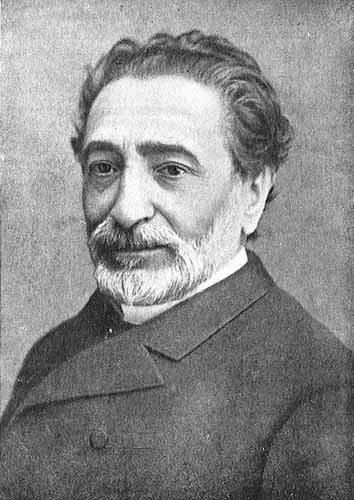
Praxedes Mateo Sagasta, President of the Spanish Government (1874-80)16 May:
18 May:
29 May:
31 May:
9 June:
23 June:
24 June:
10 July:
Notes:
[1]IOTL Chief Justice of the Supreme Court
[2]IOTL he's a legal adviser to the Katipunan, one of the oldest.
[3]IOTL One of the key players of the Philippine Revolution, having influenced Apolinario Mabini.
1873
November:
The Junta General started to the discuss their very first budget, the General Budget of 1874. For the very first time, the deputies debated, analyzed and discussed the said legislation with an optimistic energy that never seen in the political history of the nation. Everyday, both Manila and provincial newspapers reported the developments from the Intendencia.
December:
After a month of discussion, Junta President Joaquin Pardo de Tavera presented the final version of the 1874 Budget, which was estimated PH$15,500,000.00. According to the said budget, the money will used for infrastructure improvement, additional money to the hospitals and schools, and the modernization of the Army. The Governor-General signed the said bill.
1874
23 January:
The Governor-General received a telegram from the Interim Spanish President Juan Prim, saying:
"NEGOTIATIONS FOR NEW PHILIPPINE GOVERNOR-GENERAL ONGOING STOP DESPITE PROBLEMS ON THE CARLISTS AND CUBA STOP BE A BETTER CARETAKER STOP"
February:
In an extraordinary session of the Junta General, the Governor-General expressed to the deputies that his term was only temporary. Manuel Blanco Valderrama explained that the Madrid government is now negotiating with anyone whose willing to replace him on his position.
March:
The Junta General passed a Law that calls for power-sharing between the Junta and the Juntas Provinciales. Called the Law of Responsibilities, the law required for shared responsibilities between the two entities, except for defense (exclusive for the Junta General) and local government (exclusive for Juntas Provinciales)
April:
The Governor-General announced that he ceded his judicial power to the Real Audencia, now renamed the Audienca Suprema de la Justicia, as the result of an urgent resolution approved by the Junta General. According to the new Law of Justice, the Audiencia was composed of seven justice, headed by an Oidor General[1], all of them were selected by the Junta, confirmed by the President and approved by the Governor-General. Julian Carpio[2] was selected the Oidor General.
15 May:
The Governor-General received a telegram from the newly elected President of the Spanish Government Praxedes Mateo Sagasta. He told Blanco Valderrama:
"DISCUSSION WITH SR. DE LA TORRE STILL ONGOING STOP EXPECT HIS ANSWER IN TWO WEEKS TIME STOP"

Praxedes Mateo Sagasta, President of the Spanish Government (1874-80)
After learning that the President of the Spanish Government was negotiating for Carlos Ma. de la Torre's comeback, friars and their conservative allies presented a telegram to Praxedes Mateo Sagasta to think twice before re-appoint their vowed enemy.
18 May:
Back in Los Haros, President Mateo Sagasta received the telegram from the friars in Manila. He never replied; instead, he just teared the note.
29 May:
Carlos Maria de la Torre accepted the Governor-General after President Sagasta assured to him that the newly created Junta General de Filipinas will support and cooperate to his policies.
31 May:
The Governor-General received the telegram from President Sagasta,in which he said:
"SR. DE LA TORRE ACCEPTED THE POSITION STOP HE WILL ARRIVE THERE ON A MONTH AND A WEEK OR TWO STOP A MONTH OF PREPARATION FOR YOU STOP"
9 June:
Carlos Maria de la Torre boarded on the ironclad Cadiz, the main warship of the reinforced Spanish Navy's Pacific Fleet. The destination was the Philippines.
23 June:
Manuel Blanco Valderrama signed his very last law as the Interim Governor-General of the Philippines; the approval of the Law of Elections. In the said law, a Board of Elections was established. In addition, the Governor-General approved the request of the President of the Junta General to dissolve the Cortes de la Junta (the legislature of the Junta).
24 June:
Blanco Valderrama received his very last telegram as Governor-General: it was from President Sagasta. It said:
"SR. DE LA TORRE IS ON BOARD SINCE NINTH OF JUNE STOP HE'S ON THE WARSHIP QUOTE CADIZ UNQUOTE STOP REINFORCING OUR FORCE IN THE PACIFIC STOP
10 July:
As incoming Governor-General Carlos Maria de la Torre arrived in Manila, he was welcomed by the outgoing Governor-General Manuel Blanco Valderrama. As they discussed the events in the Malacañan Palace, Sr. de la Torre met the three personalities of the Junta General Filipina: Joaquín Pardo de Tavera (the President of the Junta), Numeriano Adriano[3] (the President of the Cortes) and Julian Carpio (the Oidor General).
SUMMARY
Manuel Blanco Valderrama's appointment as the Governor-General of the Philippines was immediate because of his predecessor's resignation. In spite of that, he made the public restored their confidence by placing amnesty to the exiles, culminating to the establishment of the Junta General Filipina. The laws passed by its Cortes were necessary for the future structure of the Philippine government, and his signature was vital to its final implementation. Though Blanco Valderrama's term as the Governor-General was short, it paved the way for an optimistic future, especially in the comeback of Carlos Ma. de la Torre.Notes:
[1]IOTL Chief Justice of the Supreme Court
[2]IOTL he's a legal adviser to the Katipunan, one of the oldest.
[3]IOTL One of the key players of the Philippine Revolution, having influenced Apolinario Mabini.
Last edited:
Thanks and keep tuning in!Another good update.
Timeline of Events, 1874-80: The Second Wave
11-15 July:
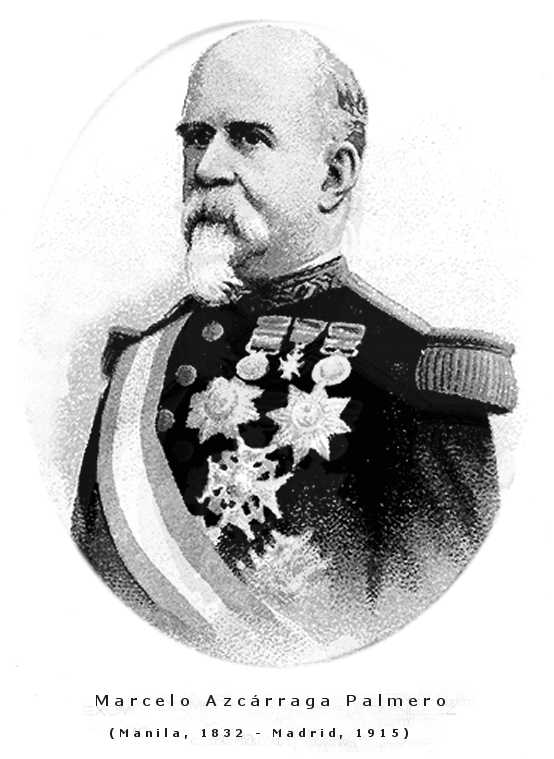
Marcelo Azcárraga Palmero, the leader of the Frente Insular
20 July:
25 July:
28 July:
30 July:
13 August:
15 August:
16-19 August:
20-21 August:
1874
11-15 July:
Several political parties were formed after the return Carlos Maria de la Torre to the post of the Governor-General. Ilustrados led by the Junta President Joaquin Pardo de Tavera formed Partido Reformista,described as the "party for the Filipino empowerment". Meanwhile conservatives formed their own political party, the Frente Insular. It was led by Marcelo Azcárraga Palmero. It was curious that the conservatives of the Frente Insular ranged from moderates/pragmatics (like Azcárraga Palmero himself) to pro-friar conservatives.

Marcelo Azcárraga Palmero, the leader of the Frente Insular
20 July:
The Governor-General met with the ilustrados and the Junta President in Malacañang Palace to discuss the actual problems of the Islands and the measure that are needed to resolve it.
25 July:
The Governor-General signed the Law of the Political Parties, passed by the Cortes of the Junta two days before. According to the said law, turn-coating was strictly prohibited without a valid explanation. In his regular meeting with the press, Carlos Maria de la Torre explained that he was already aware of the political parties formed more than a week earlier.
28 July:
The Cortes of the Junta General approved the complete secularization of the educational system by 60-8. It applied to the provincial secondary and vocational education; the schools were now under secular authorities and teachers, most were alumni of the Instituto Filipino.
30 July:
The Governor-General signed the Education Law that approved by the Cortes of the Junta General two days earlier. At the same time, Carlos Maria de la Torre announced the modernization program for the Islands, with the help of the Junta General.
13 August:
The Cortes of the Junta General approved the Desamortizaciones that calls for the seizure of Church lands and giving it to the ilustrados and small landowners. In addition, all of the monastic orders established after 1837 was completely abolished.
15 August:
The Governor-General signed the Desamortizaciones in Malacañang Palace.
16-19 August:
Authorities all over the nation stormed various monastic orders and presented the law. There were various reactions to the law; the Jesuits peacefully turned over their lands, while other orders such as Dominicans resisted the order, but their anger has no avail.
20-21 August:
Most of the Juntas Provinciales passed a supplementary law that requires most small landowners to form guilds. According to these laws, 50% of the harvests will be given to the guilds, while the rest is reserved for their respective families.
Last edited:
Good update!
Though, a couple of things to say:
- You mix present and past times in the same sentence. I guess it might be because you are not used to writing this way, or something like that.
- I thought the name of the Governor-General's palace was "Malacañang". You are missing a 'g' if that is the case.
Though, a couple of things to say:
- You mix present and past times in the same sentence. I guess it might be because you are not used to writing this way, or something like that.
- I thought the name of the Governor-General's palace was "Malacañang". You are missing a 'g' if that is the case.
Malacañan is the way the peninsulares pronounce about the palace, meanwhile Filipinos (both insulares and natives) pronounced it as Malacañang with an "ng" (as in English copying),Good update!
Though, a couple of things to say:
- I thought the name of the Governor-General's palace was "Malacañang". You are missing a 'g' if that is the case.
Nevertheless, I'll edit it soon
Good update!
Though, a couple of things to say:
- You mix present and past times in the same sentence. I guess it might be because you are not used to writing this way, or something like that.
Send me a personal message of that sentence. I'm such in a hurry when I wrote that.
Timeline of Events, 1874-80: The Second Wave of Change (continuation)
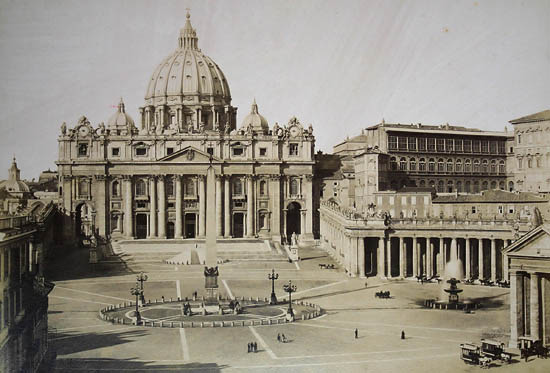
St. Peter Square, the seat of the self-proclaimed "prisoner of the Vatican Hill"
25 August:
3 September:
12 September:

13 September:
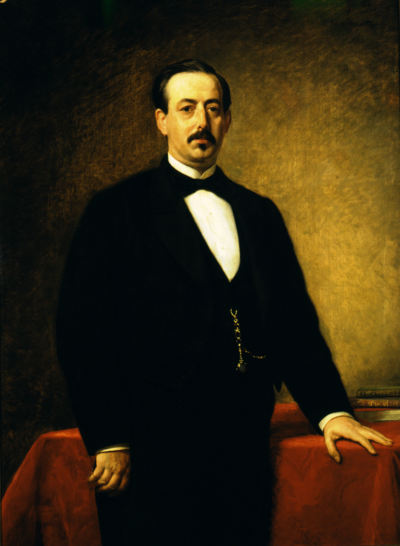
Foreign Minister Manuel Ruiz Zorrilla
14 September:
24 September:
28 September:
30 September:
October:
1874

St. Peter Square, the seat of the self-proclaimed "prisoner of the Vatican Hill"
25 August:
The friars and their conservative allies sent a letter to Pope Pius X because of the situation in the Philippines.
3 September:
The Pope received the letter of the distressed friars from the Philippines. He was distraught by its details, in which includes the Desamortizaciones and its implementation.
12 September:
The encyclical In Orientales Fidelitas was published. It criticized the Spanish government for its role in the elimination of all privileges of the Roman Catholic Church in the Islands. It also stated the threat of excommunication to the Spanish Royal Family and the Government (as well as the Junta General in Manila) if they never take any "necesarry adjustments". It was said that the Pope was angry while writing the encyclical.

Pope Pius IX, the self-proclaimed "prisoner of the Vatican Hill"
13 September:
When Foreign Minister Manuel Ruiz Zorrilla read the newspaper reports about the encyclical released by the Pope back in Rome, he was furious. He then wrote a letter to His Eminence, accusing him of hypocrisy and applying "double standards". After finishing the letter, he sent a telegram to the President, saying:
"WAS FURIOUS BY POPE'S QUOTE DECLARATION UNQUOTE STOP WROTE A LETTER TO HIS QUOTE EMINENCE UNQUOTE REGARDING THE SITUATION IN THE PHILIPPINE ISLANDS STOP WILL GO THERE TOMORROW REGARDING THE LETTER STOP"

Foreign Minister Manuel Ruiz Zorrilla
14 September:
In the Casa de los Heros, President Sagasta complained about the language used in Ruiz Zorrilla's letter to the Pope, so he suggested to the Foreign Minister that it should be never sent to Rome, as it would spark a deep diplomatic crisis with the Holy See.
24 September:
The President wrote a new letter to the Pope. The letter, which is milder and conciliatory in nature, explained the situation of the inhabitants of the Philippines before the 1868 Revolution. Through the said letter, Sagasta assured to His Eminence that his government (as well as the Junta General in Manila) will maintain the cult and clergy in the Islands.
28 September:
The Governor-General received a short telegram note from President Sagasta back in Madrid, in which he said:
"CONFLICT WAS SOLVED STOP WROTE A LETTER TO HIS EMINENCE ABOUT THE REFORMS THERE STOP"
30 September:
The sixth anniversary of "La Gloriosa" Revolution. Festivities were celebrated in every part of the nation, including Manila. In a special session of the Cortes held the Intendencia, the Governor-General thanked the Junta General for realizing the programs that were necessary for the development of the Philippines. At the same time, he signed the law that called for the abolishment of the forced manual labor system. As the result, any other construction projects will be manned by dedicated construction workers. The said law will be effective by 1st January 1875.
October:
The Governor-General signed the amended to the Election Law; which stated that voters should be:
- Filipino males (both insulares and native),age 21 and older.
- Fluent in Spanish (in Manila, Nueva Ecija and Bulacan)/Billingual (Spanish and a Philippine language)
- Can read and write
Last edited:
Timeline of Events, 1874-80: The Second Wave (continuation)
November:
December:
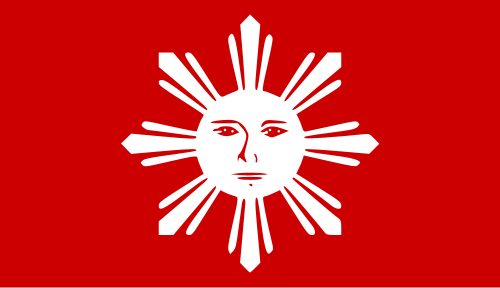
The first official flag of the Philippine Islands[1]
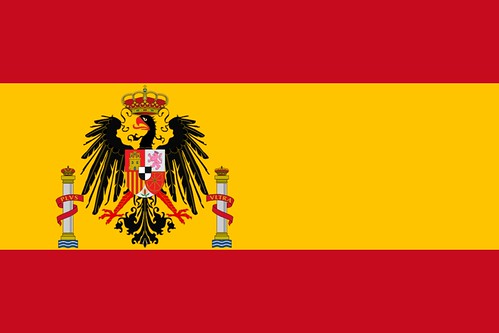
The flag of the Kingdom of Spain since 1871
29 January:
15 February-30 April:
3 May:
Note: [1] In OTL, this was the very first official flag of the Philippines from 1897-98.
1874
November:
Aside from the discussion on the General Budget for the following year, the Cortes presented the project of adapting a flag code for the Islands. When the press began to report the event, Marcelo Azcárraga Palmero criticized the project, saying that's "too early and too divisive for a society like the Philippines". In response, Junta President Pardo de Tavera said that the proposed flag code is necessity for the Islands, reminding the conservative opposition of the Foral Regions being developed in Mainland Spain.
December:
Two laws were approved by the Governor-General in the Malacañang Palace; aside from the 1875 General Budget worth PH$16,000,000.00, Carlos Maria de la Torre approved the very first Flag Code of the Philippine Islands.
According to the said law, the Filipino official flag was described as "red rectangle cloth with white sun". The flag will be displayed in all government buildings, plazas, schools and official residences of the Junta General all day throughout the year, coexisting with the Spanish Flag. The code will be effective by 1st January of the following year.
According to the said law, the Filipino official flag was described as "red rectangle cloth with white sun". The flag will be displayed in all government buildings, plazas, schools and official residences of the Junta General all day throughout the year, coexisting with the Spanish Flag. The code will be effective by 1st January of the following year.

The first official flag of the Philippine Islands[1]

The flag of the Kingdom of Spain since 1871
1875
29 January:
The Junta President Pardo de Tavera declared that the Cortes of the Junta General be dissolved to make way for the new elections that will be held on May.
1 February:
The Governor-General confirmed the dissolution of the Cortes announced by the Junta President last Friday. This move was seen as first in the political history of the Islands.
5 February:
The Board of Elections declared that the campaign period will start from 15h February to the last Friday of April.
15 February-30 April:
The two main parties campaigned in every part of the nation; "The Party of the Future" was the slogan of the Reformistas, while Frente Insular used the slogan "Pragmatic Government for a Pragmatic Society". The people attended the campaign rallies of both parties, as they heard the platforms of the two rival parties.
3 May:
Election day. For the very first time, majority of the Filipino males participated in the polls. According to the Board of Elections, 91.5% of the eligible voting population actually went to the voting station and cast their vote. The results were sent to the Central Office of the Board of Elections through telegram, in which:
- Partido Reformista - 48 seats
- Frente Insular - 20 seats
Note: [1] In OTL, this was the very first official flag of the Philippines from 1897-98.
Last edited:
You mean PH$? That's for Philippine peso, as in peso fuerteNot to be a spoilsport, but why is the Philippines budget in dollars when it should be pesetas (as it corresponds to their being part of Spain)?
Already corrected. Thanks for noticingAlso, you keep making the "mixing verbal times" mistake.
Announcement
The next events in this chapter will be posted later or tomorrow afternoon, Philippine Standard Time, as I'm start to draft it on my notebook.
The next events in this chapter will be posted later or tomorrow afternoon, Philippine Standard Time, as I'm start to draft it on my notebook.
Last edited:
Timeline of Events, 1874-80: The Second Wave of Change (continuation)
5 July:
8 July:
15 July:
22 July:
24 July:
August:
1875
5 July:
The new Cabinet sworn their before the Governor-General at the Malacañang Palace. Because Joaquin Pardo de Tavera led the ruling Reformista party last elections, he swore as the President of the Junta General for the second time. The other members of the Cabinet were the following:
- Bonifacio Flores Arevalo, Manila - Minister of Health
- Mariano Alvarez, Cavite - Minister of Education
- Ambrosio Bautista Rianzares, Laguna - Minister of Justice
- Deodato Arellano, Bulacan - Minister of Internal Affairs
- Luis Enciso Villareal, Albay - Transportation, Trade and Industry
- Bonifacio Flores Arevalo, Manila - Minister of Finance
- Mamerto Natividad, Nueva Ecija - Minister of Agriculture
- Valentín Díaz, Ilocos - Minister of Infrastructure
8 July:
Agriculture Minister Mamerto Natividad proposed an expansion of the Desamortizaciones to include the expropriation of the haciendas owned by the large landowners (oligarchs). According to Sr. Natividad's expansion plan, 85%-99% of the haciendas should be given to the small landowners, a measure that strongly opposed by the conservatives.
15 July:
On the next discussion about the expansion of Desamortizaciones, Transportation, Trade and Industry Minister Luis Enciso Villareal suggested that all oligarchs (large landowners) who had given up a large percentage of their haciendas should be investing in the developing industries of the Islands. After three minutes of indecision, the conservatives agreed on the suggestion of Sr. Villareal. The session of the Cortes ended with a compromise: 95% of the haciendas should be given to the small landowners.
22 July:
After two weeks of intense debate, the Cortes finally approved the expansion of the Desamortizaciones; aside from adapting the suggestion of Sr. Enciso Villareal and a compromise on the distribution of the haciendas, the expansion plan required most small landowners (who now owned 95% of the land) should form guilds for economic production. The expansion was approved by 59-9.
24 July:
With the presence of the three members of the Cabinet (Mamerto Natividad, Luis Enciso Villareal and Junta President Joaquin Pardo de Tavera), the Governor-General signed the expansion of the Desamorticaziones at the Malacañang Palace. The expansion will be effective by 1st August.
August:
When the time came for redistributing most of their lands, almost all of the oligarchs seems that they're ready for this sacrifice as authorities gave the certificate of ownership to the small landowners. Though there were some resentment from some of the large landowners, the land distribution was relatively peaceful in general. The said event transformed them into capitalists, as they invested in the developing industries of the Islands, as required by the expanded Desamortizaciones
Last edited:
Share: